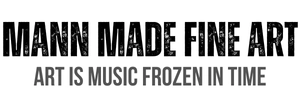Abstract art has long been celebrated for its ability to transcend the boundaries of traditional representation and tap into the essence of the human condition. Through its exploration of color, form, and texture, abstract art delves into the complex emotions, thoughts, and experiences that define our existence. Let's look at some of the connections between abstraction and the human condition, highlighting the ways in which abstract art serves as a mirror for our inner worlds.
At the heart of abstract art is the desire to express the intangible: the emotions, thoughts, and sensations that cannot be easily captured through traditional representational art. By using abstraction as a visual language, artists like Mark Rothko and Wassily Kandinsky sought to convey the depths of human emotion and the nuances of the human psyche. Through the use of color, shape, and composition, abstract art evokes feelings that resonate with our own emotional experiences, forging a powerful bond between the viewer and the artwork.
Abstract art has long been associated with the exploration of the subconscious mind. Artists like Jackson Pollock, who pioneered the drip painting technique, embraced the spontaneity of the creative process as a means of tapping into the subconscious. By allowing their instincts and intuition to guide their artistic choices, these artists created works that reveal the hidden depths of the human mind, providing a window into the often mysterious and enigmatic realm of the subconscious.
One of the most striking aspects of abstract art is its ability to reflect the ever-changing nature of the human experience. Our lives are marked by constant transformation, growth, and adaptation – and abstract art captures this fluidity through its dynamic compositions and evolving forms.
The relationship between abstraction and the human condition lies in its capacity to delve into the depths of our inner world and reflect the complexities of our emotions, thoughts, and experiences. Abstract art serves as a powerful reminder that art is more than just a representation of the world around us; it is also a reflection of our innermost selves, and a means of connecting with others on a deeply human level.
As we explore the world of abstract art, we are constantly reminded of its transformative power, and the ability of abstraction to capture the essence of the human condition in all its richness and complexity.

